MikroTik CRS326-4C+20G+2Q+RM Switch Power Consumption and Noise
We like the fact that the power supplies on this switch are internal, and that there is a redundant power supply setup.
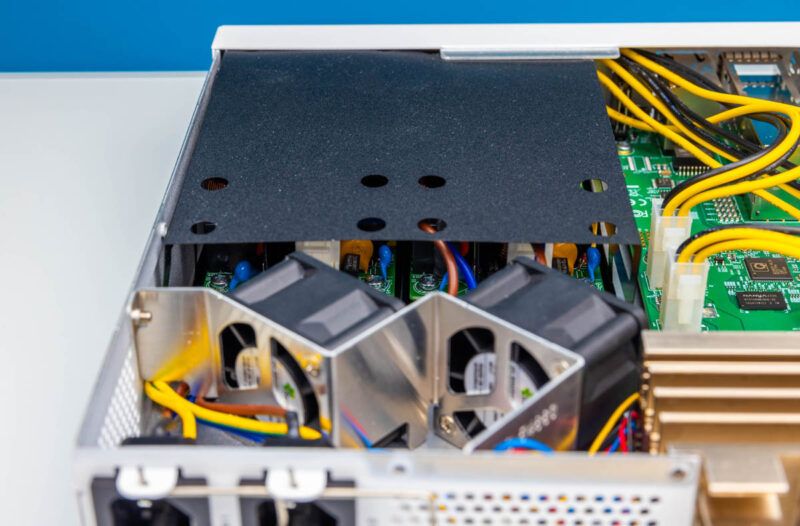
At idle, we saw around 31W which is fairly significant. Adding 2.5GbE links generally added around 0.7-0.8W. Adding a single SFP+ to 2.5Gbase-T adapter was about 1.4W but that would be a bit strange to use in a system with combo ports. The maximum rated power consumption with every port filled is around 51W and the maximum power consumption of the switch is set at 70W.
From a noise perspective, at startup, this is loud, reaching over 54dba in our 34.5dba noise floor studio. After that, the switch generally falls into the 36dba range, making it relatively quiet, and those two figures are probably upper and lower bounds of what to expect.
Key Lessons Learned
Something we need to talk about is price. At a $999 MSRP, and what we guess will be an $800-900 street price, it is far from cheap. One of the questions many of our STH readers are going to rightly ask is whether it is worthwhile. Having everything on a single switch is great. Having a combo port so one does not have to use $50 SFP+ 2.5Gbase-T adapters is also nice. QSFP+ is good, but it is starting to feel old at this point.
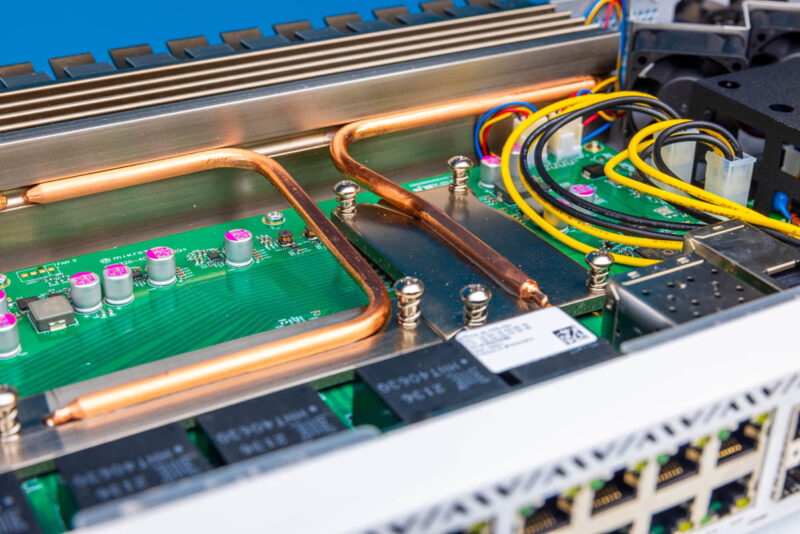
Some of our readers are likely to look at this and think that it would be cheaper to build an architecture with other switches like the MikroTik CRS310-8G+2S+IN for 2.5GbE needs, then uplink to a faster 10GbE or 25GbE switch. The answer is that it is likely less expensive, but then it is no longer a single-switch solution.
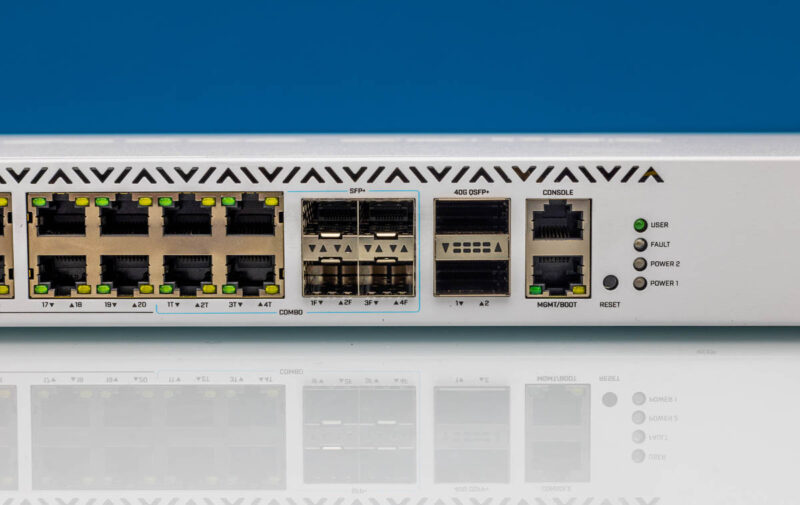
The other key lesson learned is really around the 10GbE/ 40GbE infrastructure. On one hand, for the workstation and SMB NAS markets, 10GbE is still common. 40GbE QSFP+ NICs are dirt cheap as the servers that they were used in are largely decommissioned at this point. It feels like we should have 25GbE and 100GbE in a switch launched in 2024. In the data center, we are over five years removed from when 25GbE/ 100GbE really started to take off, and MikroTik already has switches like the MikroTik CRS504-4XQ-IN we reviewed that can offer over twice the switching capacity of this switch (across fewer interfaces) at a much lower price. It is one thing to say we want the switch, but that also would take Marvell offering switch silicon that meets those specs at a low enough price to make a MikroTik product viable.
Final Words
Many folks will strongly react to this switch, either in the “love it” or “hate it” category. Some will look at the price or the 10GbE/40GbE and feel like something is completely off. Others will look at the features the switch offers and the lack of great options in the market (is the TP-Link TL-SH1832 we reviewed really a viable competitor?) and think this is a trailblazing 2.5GbE switch.
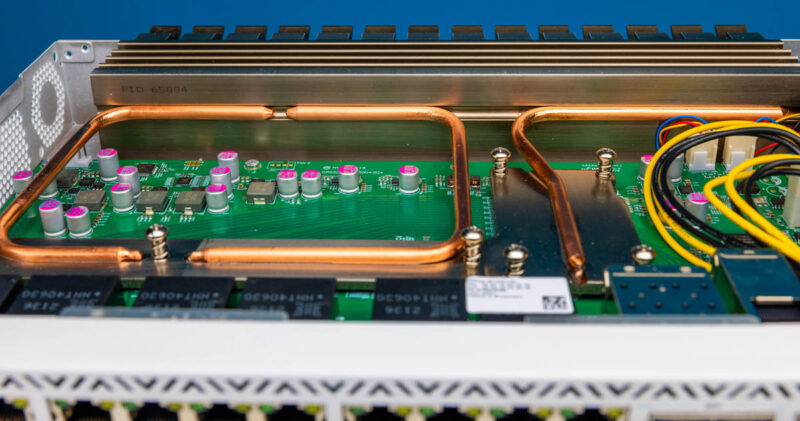
At the same time, let us take a moment to recognize the heatsink. This heatsink is enormous and keeps the switch cool, even without that left rear fan. Unlike some other vendors, MikroTik realizes that not every SMB or home has an equipment closet, so the company is doing a lot of design work to quiet its gear. We love this.
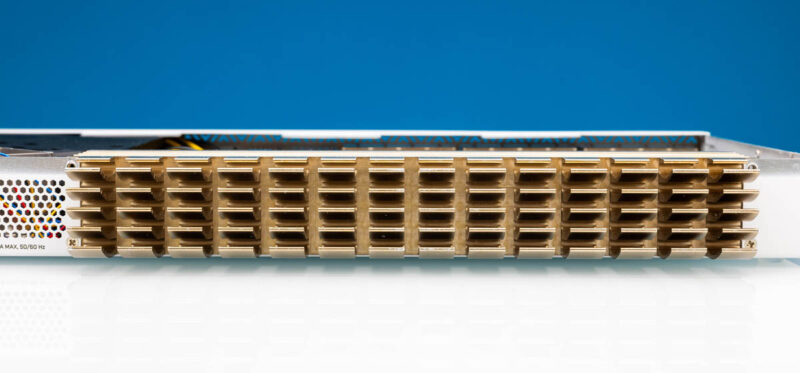
Perhaps the bigger and more important development here is that MikroTik has yet another 2.5GbE switch in its portfolio. Hopefully, there will be a PoE++ version for the WiFi 7 build-out soon, but for now, we can at least get a higher port count from the company. We also hope this trend will continue with new models rapidly hitting the market this year.
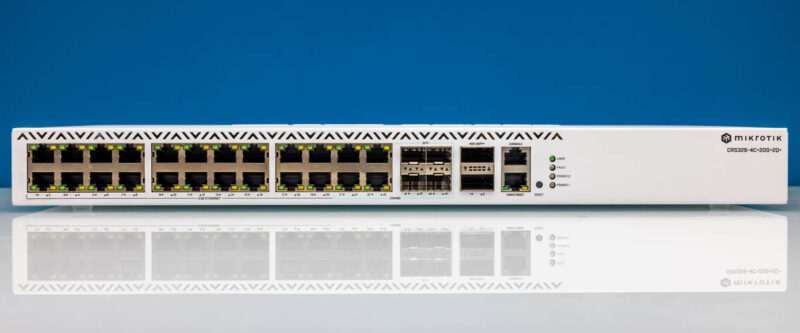
Overall, the STH team that used the switch all reacted similarly. This is exactly what we would expect from a MikroTik switch. Lots of interesting port combinations, MikroTik RouterOS software, performance that meets expectations, and a functional cooling design that makes you pause and smile that someone took the time to design something so different.




There are a tremendous number of spelling errors in this article!
Does anyone know what happened to the YouTube review of this switch? It appears to have been set to private.
What does “fanless-adjacent” even mean? It either has fans, or it doesn’t. This has fans. It is an actively cooled system.
It is strange no one seems to consider the TP-Link TL-SG3428X-M2 – 24 2.5GbE ports with PoE and 4 SFP+. They’re managed and very cheap – I got mine for just over £412 plus duty.
Sorry, XP and XPP models for PoE.
@Parallax: I got burned on TP-Link PoE and never went back. The unit I had did not galvanically isolate the DC output (which IIRC is part of the 802.af spec), but put -48VDC on the GND PoE conductor (and mains-referenced GND on the PoE positive connector). So when I plugged in any PoE device that had a mains-powered monitor connected, it would connect PoE GND to mains GND via the HDMI cable, which shorted out the switch’s power supply and the whole switch would shut off.
Never went back to any TP-Link PoE product after that experience.
I would prefer they drop the 40GbE and the price. Or leave off the 40GbE and add 4x more SFP+ for the same or similar price.
With the 40g ports, you can split them into four 10g, If my math is correct that is:
Twelve 10g
Twenty 2.5g
I am a huge Mikrotik fan but damn, those model numbers need to be shorter.
Great information
I think that extra fan location is for future POE models
Thanks for the entire STH family
@Art C They’re actually informative:
CRS326-4C+20G+2Q+RM
CRS = Cloud Router Switch (router/Switch modes)
326 = 32 ports (6 iirc is level up support for routerOS or something)
4C = 4 combo ports
20G = 20 2.5G ethernet ports
2Q = 2 QSFP+ ports
RM = Router mode?
For that price, I’d have expected 10GbE capable ports and PoE.
@Evan +RM means Rack Mount. +IN is their desktop version
The problem with reviewing so many firewalls/appliances from AliExpress is that it skews expectations on pricing. I don’t particularly think $900 is bad for this switch and it’s on my short list of upgrades for my rack. For me, having Chinese unbranded equipment is an absolute no go for my supply chain security needs, so I’m willing to pay a bit more.
I noticed in this review you did not test out the newer L3 Hardware Offloading. If that is enabled it should offer full wire speed on all of the ports. The L3 Hardware Offloading is offered in the newer RouterOS v7 releases. I would be interested in those figures.